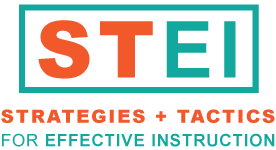Back to: Planning
In effective learning environments, teachers engage in active teaching and monitoring of student performance to a predetermined goal. Students are actively engaged in completing relevant academic tasks successfully. These tasks are those that refer to a set of goal-directed activities toward a specific objective and standard.
Visually Display Goals, Objectives, and Standards
Write your instructional goals on the board or overhead at the start of each day, lesson, and/or unit. This is a fine way to give students a glance at what they can be expected to produce and to what level of performance. Review the progress toward achieving the goals periodically during the day, lesson, and/or unit.
help students keep track of what they are doing
Often teachers have students develop goal notebooks for content areas or behavior. Students can develop personal goal notebooks in which they, together with the teacher, identify areas and write personal goal statements. These can be academic or behavioral in nature. It is important that these goal notebooks specify what the students will do, under what conditions, and to what level of proficiency. As the goals are achieved they can be signed off by initialing them. It is important to evaluate progress daily and weekly. Have students, teachers, and parents comment on progress. Encourage all parties to evaluate progress in terms of “best.” What was the “best” day? Have students tell why. For those days that weren’t “bests,” ask students to identify what they need to do to improve.
